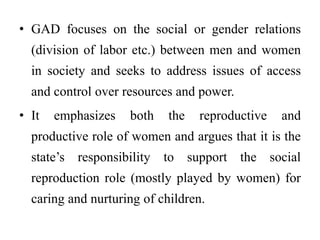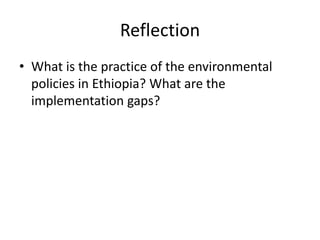1) The document discusses the evolution of approaches to addressing gender in development, beginning with Women in Development (WID) in the 1960s-1970s. WID aimed to integrate women into existing development programs by focusing on legal and policy changes.
2) However, WID was criticized for not challenging underlying systems that perpetuated gender inequality. This led to the Women and Development (WAD) approach, which examined women's roles in the context of broader social, economic, and political structures.
3) Overall, the document provides a history of thinking around gender and development, from the initial WID framework to newer approaches that consider transforming fundamental power imbalances between women and men.






































































